By Alex Trukan
Having options to pass is an essential requirement of the effective football. It is basis for not only possession style but also for more direct approaches. Attacking ‘connections’ help the team to play away from pressure, circulate the ball as well as penetrate. The type of support available will determine what the attack will look like. For example, if the support is available only in front, it is likely that the ball will be played forward. Similarly, if nobody offers an option sideways and up front, it would be difficult to effectively switch play and recycle the ball. Therefore, the more options that are available, the greater flexibility the team has in attacking. The type of support, where is it available as well as subtle details such as supporting player’s body positions are part of the non-verbal communication between players.
As the team attacks through the thirds, it is crucial to have in mind that the aim is to progress forward toward the opposition’s goal. This is why, having supporting players available to pass in front of the ball is crucial. At times, however, the option to play forward won’t be available (i.e. players tightly marked, no space to pass/dribble the ball). Support sideways from the ball will provide an option to recycle the ball and create different angles. Finally, it might be the case that playing backwards to then play forwards would be the best option. This shows the importance of having depth behind the ball.
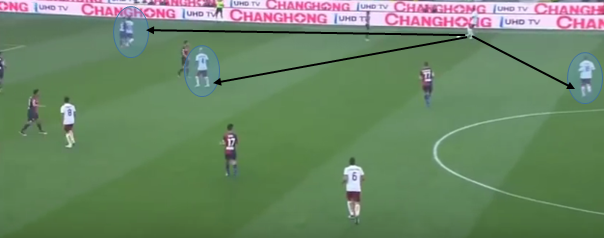
Having players that link the play forward is an important asset to have. For example, it might be the case of a striker dropping deeper to get the ball and progress it into more advanced positions. The key recommendation would be to find ‘gaps’/’channels’ in between the ball and linking players.
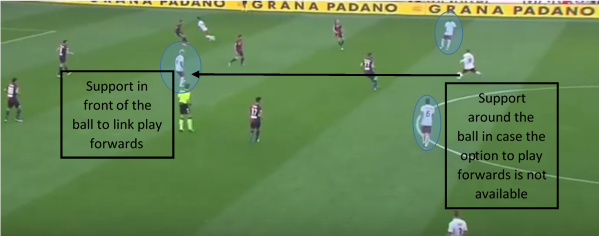
Having ‘connections’ between players is especially important around the opposition’s penalty box. In the areas where spaces are tighter and well covered by the defenders, movement off the ball to create space and maintain gaps between each other would allow quick combination play. Players should operate in different spaces but close enough to combine quickly using short passes.
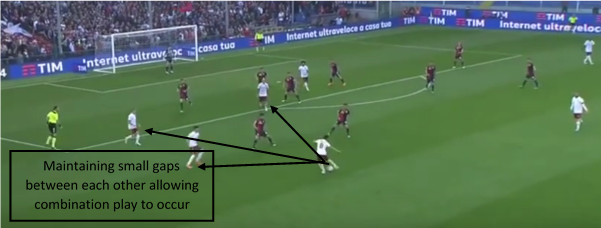
In order to make ‘connections’ more effective, communication between players is essential. This can happen in several ways. Firstly, obviously verbal communication will play an important role. However, in addition to that, no less important is non-verbal communication. Specifically, player's body position, weight of the pass, direction of the pass (which foot it is played to) as well distances aid this process.
[wpsharely id="2988"][/wpsharely]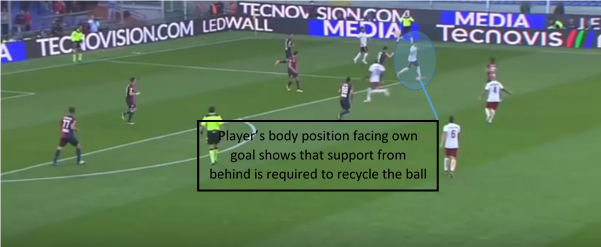
As it can be seen below, player with their back to the opposition’s goal, communicates with his body position that support in behind the ball is required. Also it might be the trigger for other players to make runs in behind.
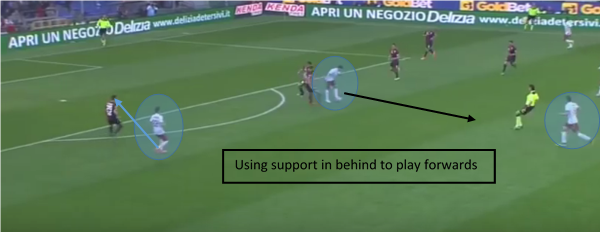
Similarly, the type of support provided (by movements off the ball) will encourage a certain style of play. For example, runs in behind the ball and offering support beyond the opposition back line will encourage a more direct approach. On the other hand, having players closer around the ball, both in behind and sideways will force a more patient build up play.
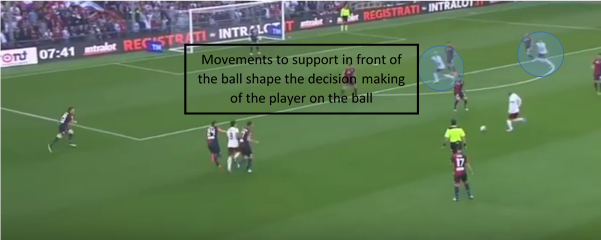
Providing support when attacking is an important aspect of ball circulation and penetration. However, it should be also remembered that supporting players determine the position of the defenders what can create pressurised situations around the ball. This is why, lack of support (isolating) is also an important strategy which encourages longer passing (delivery of the ball into spaces), dribbling and individual duels.
By Alex Trukan, Development Coach, Nottingham Forest
@AlexTrukan


